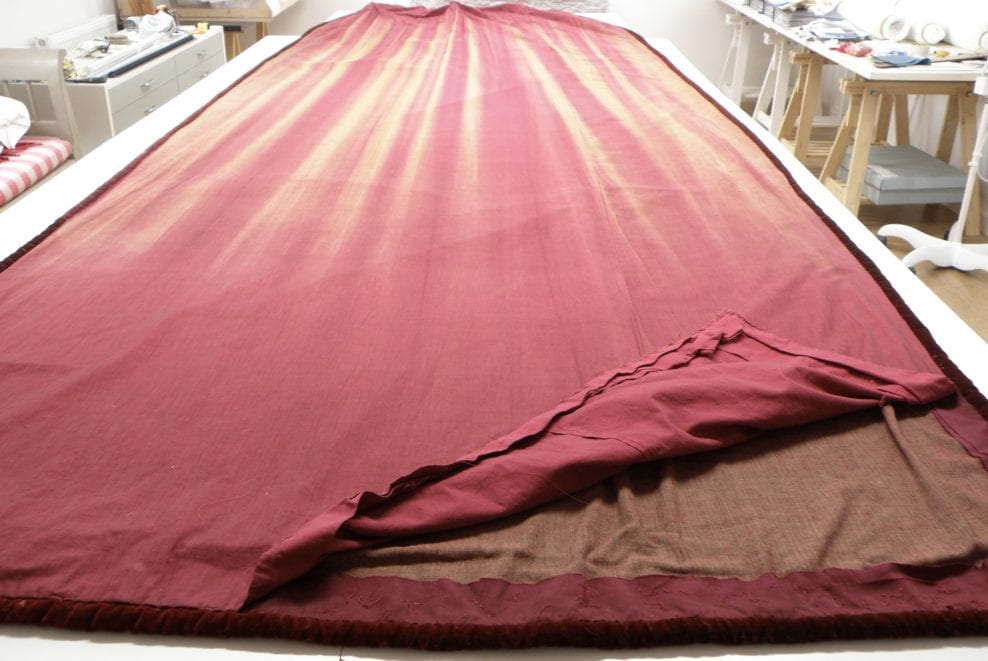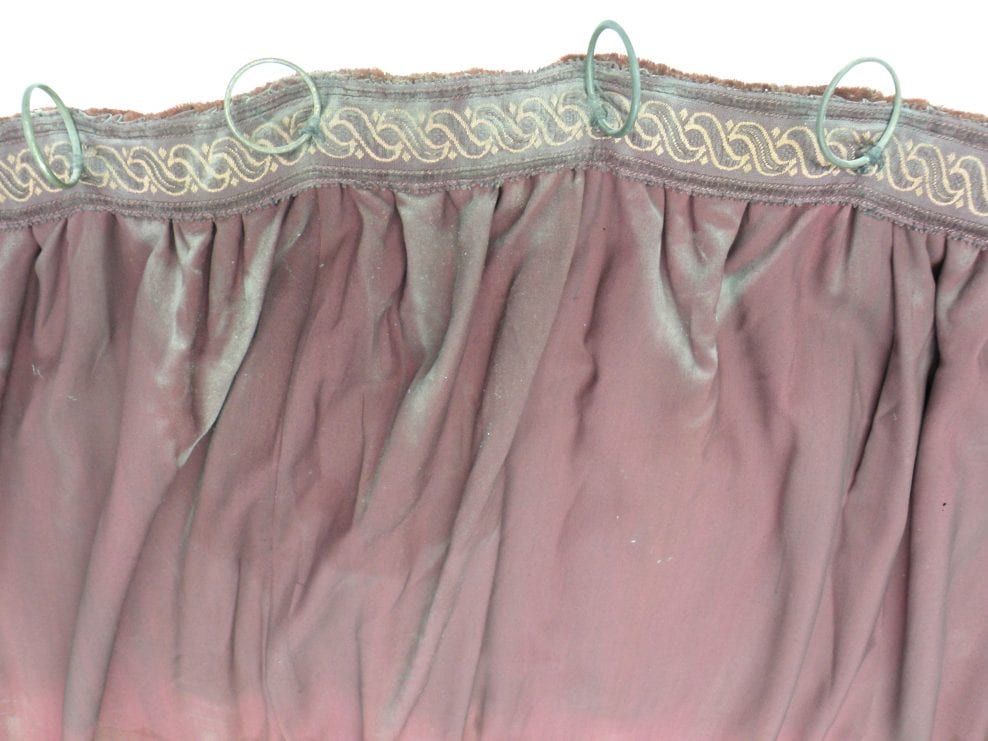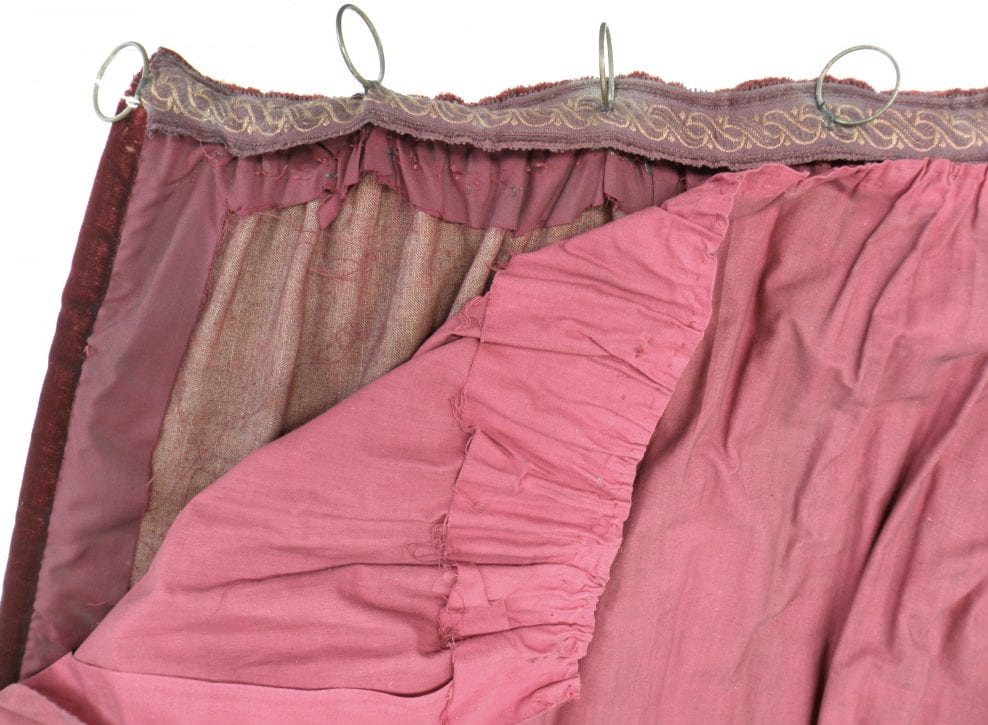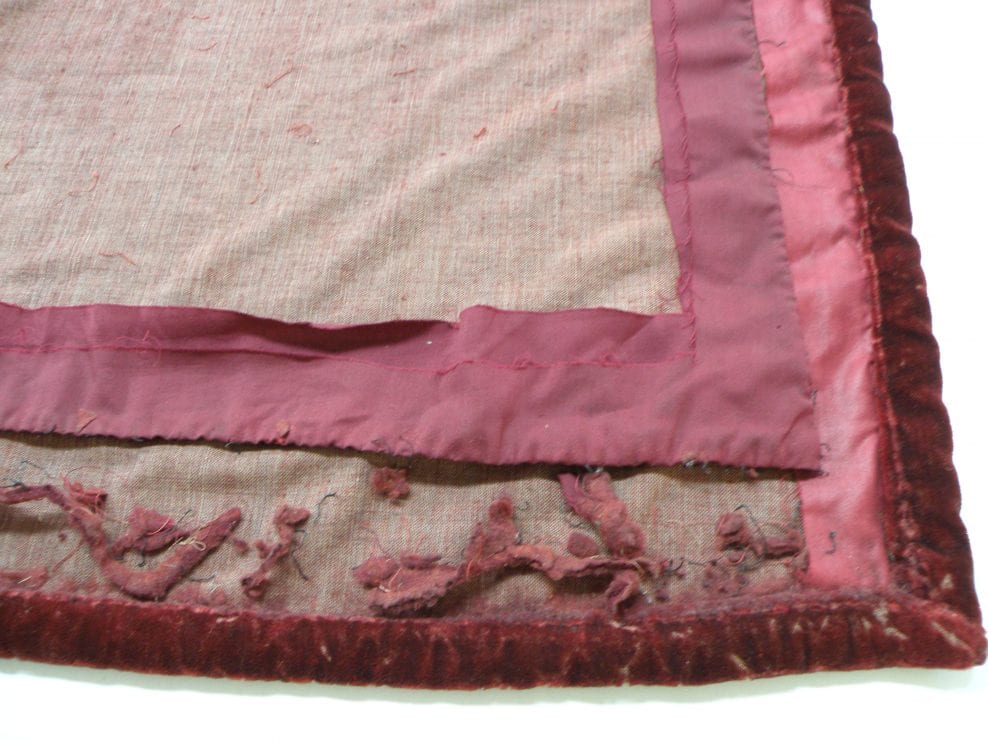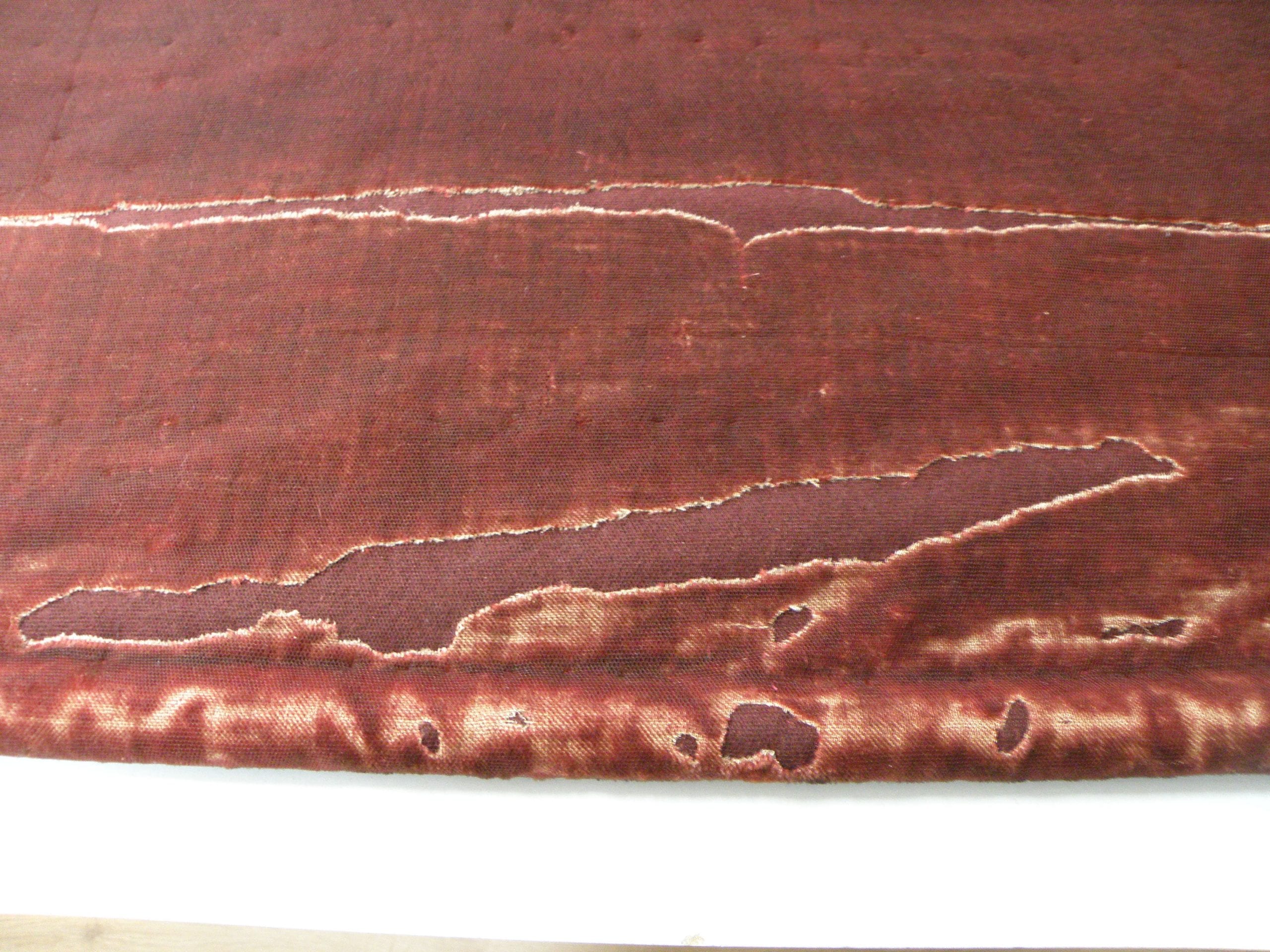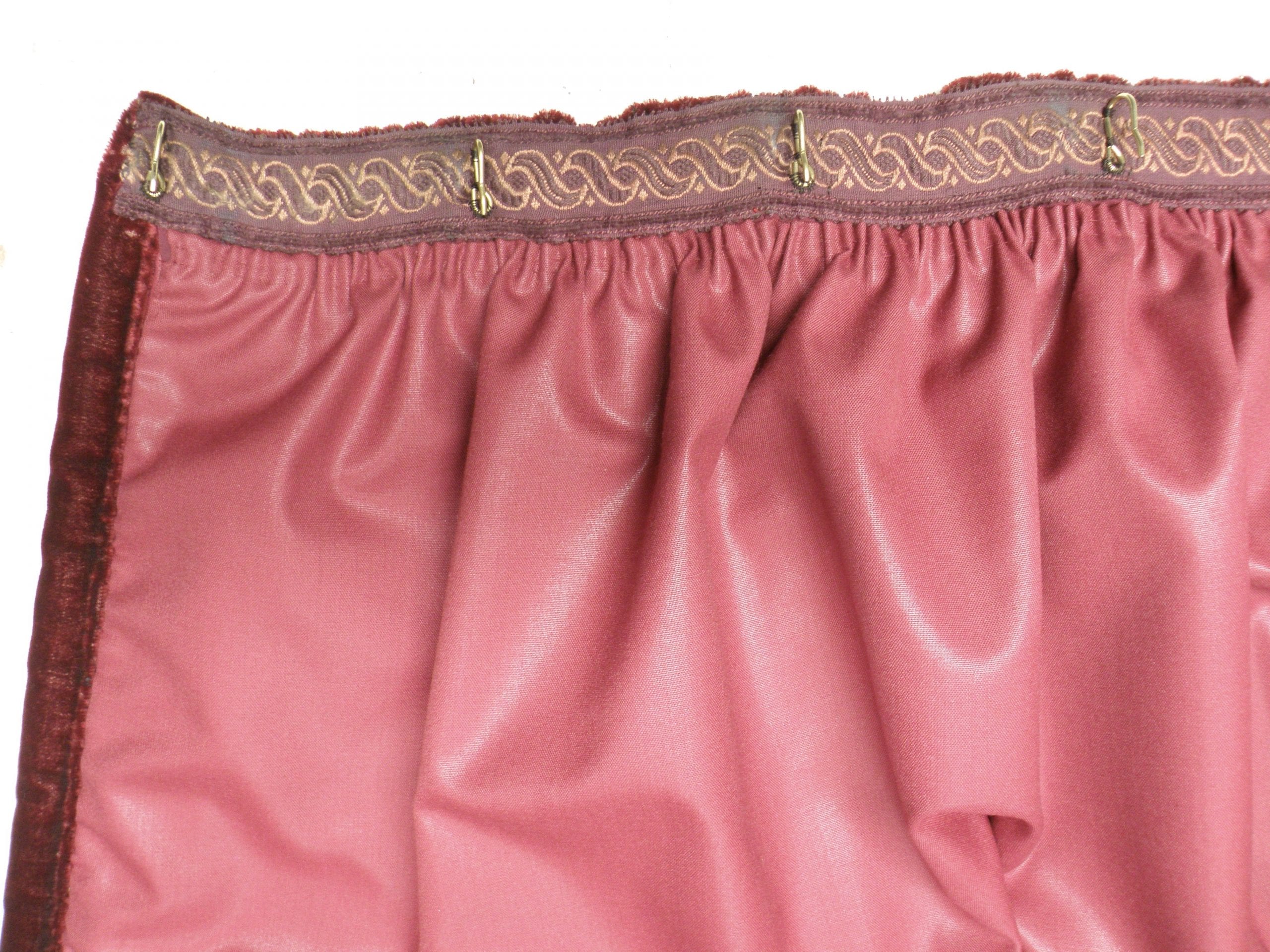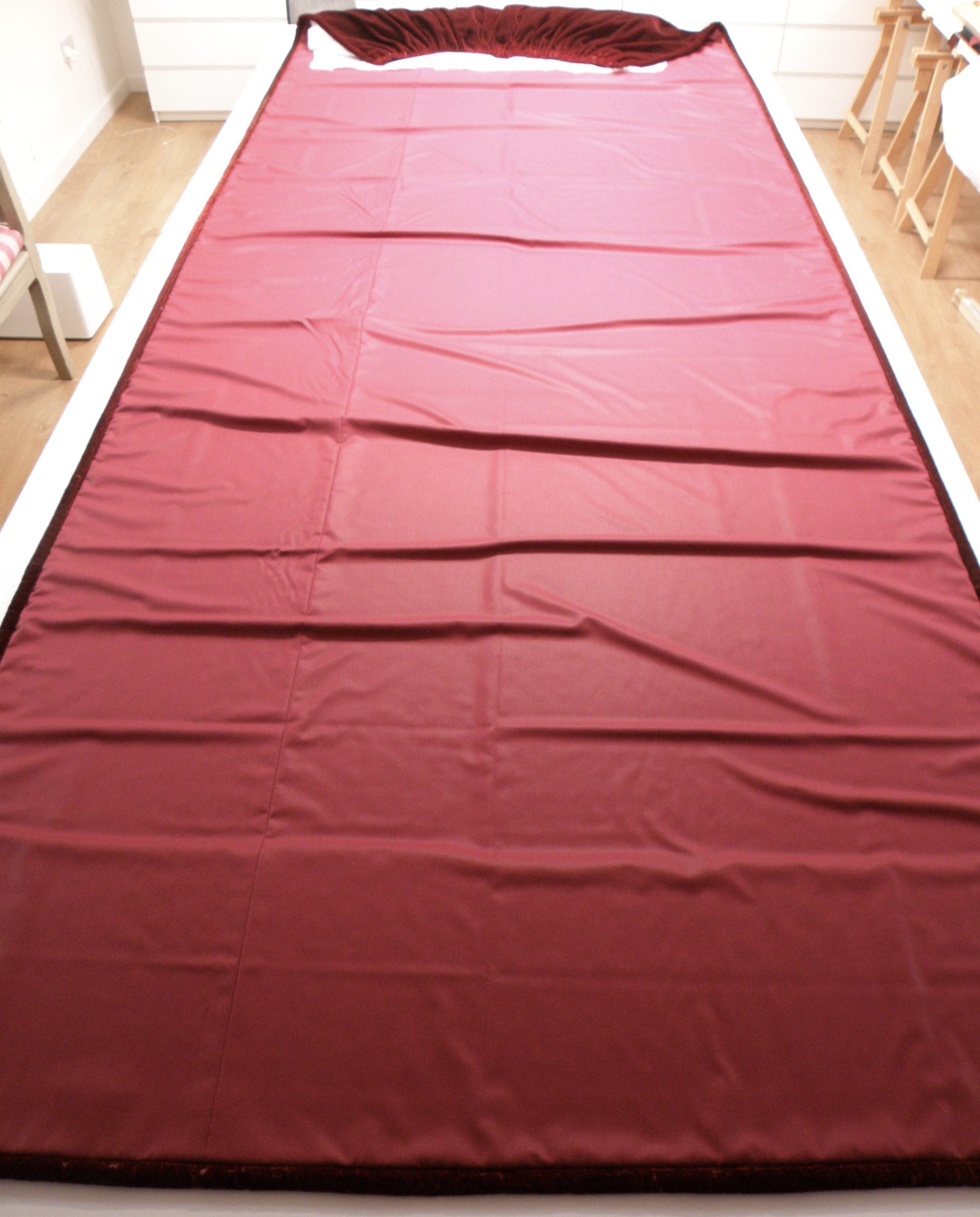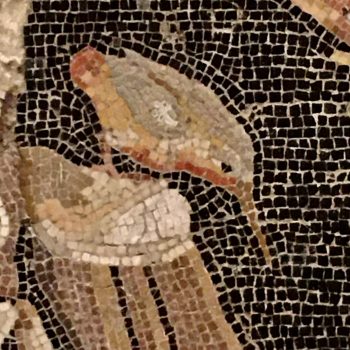Projects
Conservation of curtains from the Saloon, Calke Abbey NT
One of a set of five pairs of dark crimson wool plush (velvet) curtains, Circa 1880, part of the window furnishings, together with a complex deep pelmet, with a rope fringe and silk covered bobble hangers. The curtains had undergone minimal repairs in1985, when the National Trust first took over Calke Abbey and, after 30 years on open display, were found to have suffered further mechanical damage. Work started on one pair of curtains as a trial in 2017.
The dark red wool plush fabric generally appeared quite sound, although the wool fibre was shedding. The curtain had suffered light damage, with severe fading from red to brown down both side edges. The curtain had suffered mechanical damage, from handling, down both side edges, in line with the curtain tie backs & hooks, where the fabric was thin, weak, bald of the pile and with tears and splits. There were two vertical tears close to the viewing left-hand side edge, with some loss of material, notably over the rolled edge. The hem of the curtain pooled on the floor for up to 40cm. The wool pile had been grazed by moth/insect with small holes and scarring damage dotted across the hem area and along the rolled hem and lower sides. The curtain was badly creased and distorted. The curtain had been relined twice, once with a burgundy coloured plain wool fabric, then later with a pink cotton lining fabric. The replacement lining was in a very poor condition, faded and worn with splits on both the right and left sides. The lining was very tight and constraining the curtain, with puckering and distortion across the hem area and lower side edges. Previous repairs were carried out to the curtain and lining in 1985, with dyed cotton support patches placed behind the large tears in the wool plush and spaced laid couching worked in a visible thread. Dyed net was applied over the damaged rolled edge on the viewing right. These repairs were now failing, with further splits, tears and holes beyond the couching. Several of the rings were distorted and misshapen. The twisting action of the rings against the heading had caused damage- with tears and small holes in the wool plush across the heading.
The curtain required conservation to stabilise its condition for continued display. The replacement pink cotton lining was removed and a piece retained as evidence of the previous treatment. The later burgundy coloured wool lining was also unpicked and removed at the side edges and hem. Evidence of the original crimson glazed wool lining was found at the side edges.
The only suitable cleaning method was in depth surface cleaning by vacuum suction. This was carried out front and reverse using a Conservac with a soft goat’s hair brush attachment, vacuuming following the direction of the pile of the fabric. Mini tools were used for the gathered heading and hem area. There was a thick build up of matted fibre dust across the hem – this was dislodged and removed using tweezers. Once vacuum cleaned, the curtain was humidified and blocked out to smooth out the wool plush and any distortions, particularly at the hem and side edges. Dye samples were prepared to choose the most suitable colour and type of support fabric. A length of dyed wool flannel support fabric was placed behind both side edges, with a piece of dyed wool Voltaire support placed behind the hem area. Stitching repairs were carried out over the splits and weak areas of wool plush using laid couching, worked in fine colour matching Skala 360 thread, with lines generally placed 8mm apart, to hold the weak and damaged side edges onto the dyed wool support. This worked very well, providing a flat and even support – the Skala thread bedded in well with the pile. Small holes across the hem area were stitched down on to the support. The side edges were opened to allow the dyed wool support to be inserted behind the areas of loss. Once supported, the side edges were re rolled and secured as per the original edges. Patch support repairs were carried out behind the small tears across the heading.
After consultation with the Curator and House & Collections Manager, it was decided to reline all curtains with a new specially woven (Gainsborough Ltd) replacement glazed wool tammy, colour matched to the original lining.
The new lining was prepared and applied to the reverse, with 3 vertical lines of attachment. The side edges were turned and hemmed in position, over the original lining, close to the rolled edge of the wool plush. The new lining was gathered at the heading and stitched in place over the previous lining. 9 new brass hooks were evenly spaced and stitched in position across the heading, being secured through all layers- the woven tape and gathered wool plush. The curtain was rehung on site. The 7 original curtain rings were threaded on to the appropriate curtain rail, with the addition of 2 new hollow brass curtain rings and had a small split ring added to receive the hooks. Once the hooks were attached, the curtain was gradually unrolled from heading to hem and allowed to hang freely to allow the new linings to settle in position.
Result: The treatment has greatly improved the overall condition, stability and hang of the curtains. Previous coarse repairs and distortions have been removed and the curtain has been smoothed out and supported onto sympathetic materials to allow it to hang comfortably. The new lining is a reproduction of the original 19th C. glazed wool lining, adds body to the main fabric of the curtain and provides additional support as well as offering protection from light. The curtain has not been over cleaned, the blackened streaks could not be removed, and the previous damage to the wool plush is still in evidence at the side edges in keeping with the Spirit of Place of Calke. The treatment of one pair as a trial has informed the ongoing conservation of the rest of the set of curtains.
